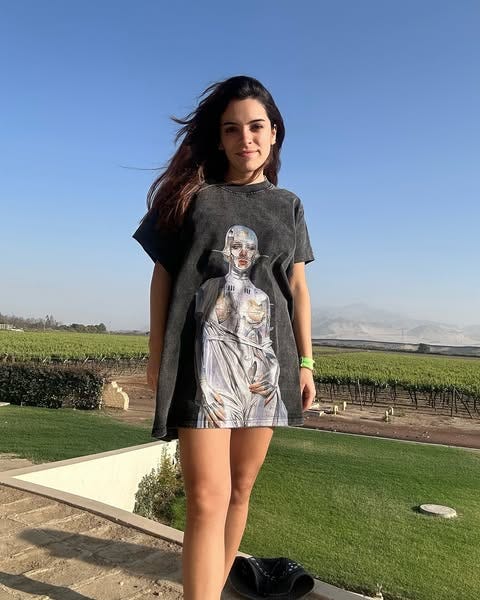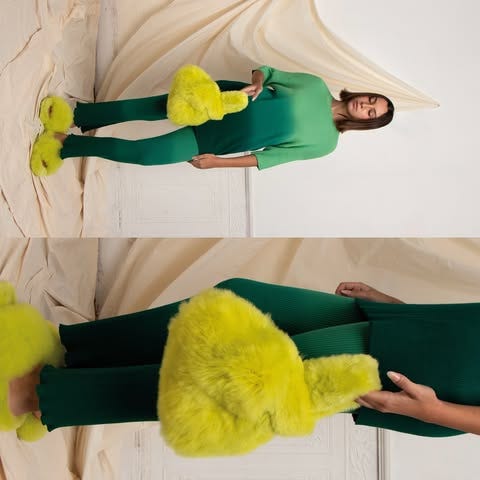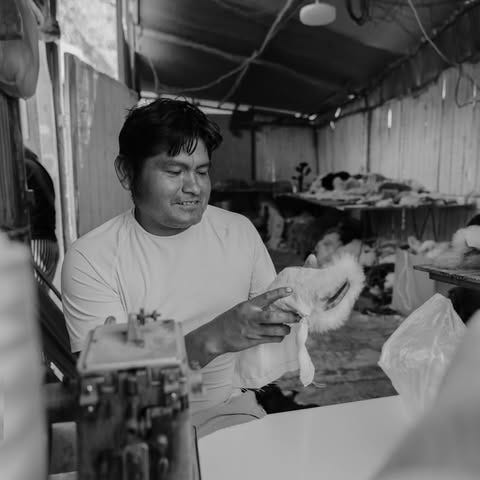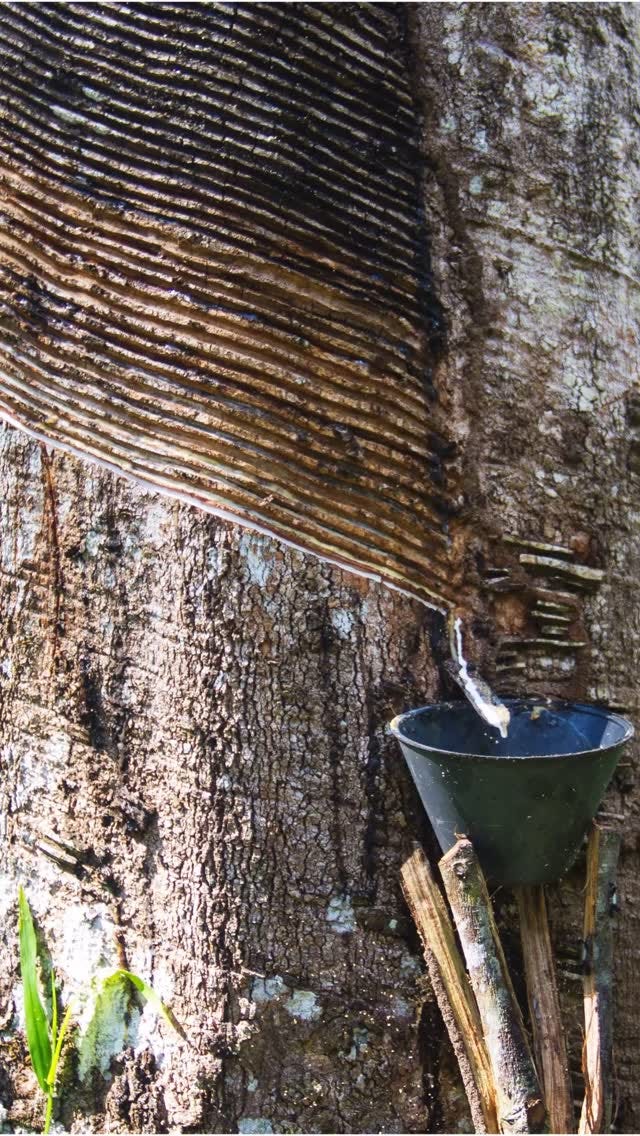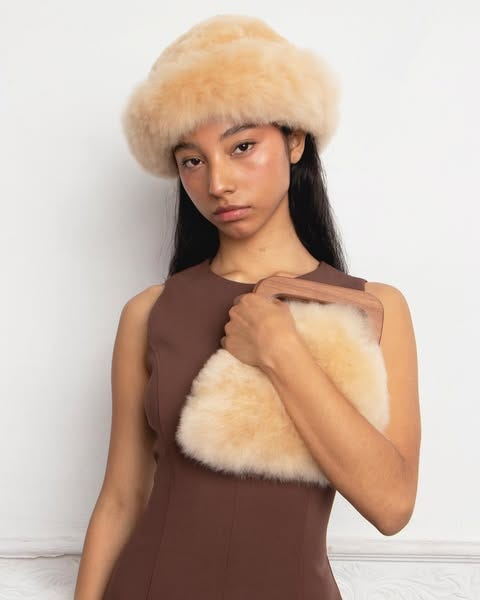FASHION AS A DRIVING FORCE FOR CHANGE: MEET PERUVIAN BRAND INVERNA
Share
Fashion is a complex, interconnected industry—one that transforms fibers into products that captivate consumers, connecting not just economies and businesses, but also people and communities.
This role of fashion as an agent of communal change challenges the current pace of an industry that prioritizes economic growth at the expense of resources and the people behind the production processes.
An idea embodied by Inverna, a Peruvian footwear and accessories brand redefining fashion as an engine of transformation.
Bazar by Hotbook spoke with Adriana Burga, one of Inverna’s co-founders, to explore the brand’s vision and the power of design as a meeting point for creative vision, local resources, and the cultural heritage of the country they call home.
Bazar by Hotbook (BbH): Inverna’s work and its interpretation of raw materials feel deeply tied to Peru’s cultural heritage.
What elements of Peru personally inspire you, and how do these translate into the brand’s creative work?
Adriana Burga (AB): I’ve always believed Peruvian craftsmanship carries a stigma of being seen as overly traditional, with neutral colors. When people hear “alpaca,” they immediately picture a brown, white, or cream sweater—colors perceived as “elegant.”
What inspires us most about Peru is its biodiversity: its flora, fauna, coast, mountains, and jungle. We’re surrounded by a wealth of species and colors. In the jungle, you see vibrant hues, birds, mammals, and lush greenery. In the mountains, snowy peaks and landscapes; on the coast, beaches. Peru’s nature inspires us, and we aim to represent it in our products while breaking molds of what’s expected.
Since I was young, I’ve loved doing the opposite of what everyone else does. If there’s a trend, I like to stand out and not follow the crowd. Since the beginning, my design process at Inverna has been: “If others are doing A, we’ll do B.” Differentiation is key. That’s why we launched products in bold colors like lime green and unexpected fusions from the start.
BbH: We’re fascinated by Inverna’s holistic view of fashion as a driver of social impact. How did the brand develop this vision of empowering surrounding communities?
AB: Let me explain our production process. We primarily work with alpaca leather. Importantly, no alpacas are harmed for our products—we call this “ethical leather.”
In Peru, many families and communities raise alpacas. For them, the animals’ survival is critical because alpaca wool, highly valued globally, generates more income over an alpaca’s lifespan than its leather. However, alpacas often die from freezing temperatures in the Andes or starvation, a growing issue here.
We use these ethically sourced hides that would otherwise go to waste. Local artisans in Lima and rural areas handle the tanning—a centuries-old, labor-intensive process. It involves boiling, treating, dyeing, and drying the hides, often with family or community help. This isn’t mass production; it’s slow, artisanal work.
We give alpaca leather a second life while partnering with artisans under fair-trade principles. As our prices rise, so do their wages.
We’ve also partnered with Caxacori, an organization working with the Awajún communities in Peru’s jungle. They produce sustainable rubber from the Shiringa tree, which doesn’t require deforestation. Our Nubecitas (“Little Clouds”) sandals, for example, use soles from Caxacori. This reflects our commitment to sustainability and social impact.
BbH: Inverna’s collaborative creative process rejects the myth of a lone “genius designer.” How do you define creativity?
AB: The “genius designer” idea doesn’t apply here. Each product evolves organically through dialogue with artisans. It’s not about me dictating designs—it’s a fusion of ideas.
For instance, we’ve tweaked our slippers’ soles and structure countless times. We started with fabric soles, then added foam, then microporous layers. Feedback from artisans and clients shapes everything. Creativity at Inverna is collective, iterative, and open.
BbH: Inverna balances tradition and innovation. What advice would you give designers seeking to innovate through heritage?
AB: Look inward before outward. Many designers admire references from “developed countries” instead of exploring their own culture. In Latin America, and Peru especially, our cultural heritage is unmatched—whether in ceramics, textiles, or other crafts passed down generations.
My advice: See the beauty and richness in your own country. Don’t let these traditions fade.
BbH: Sustainability is core to Inverna. How do you balance growth and ethics, and what challenges have you faced?
AB: Sustainability is costly. A sustainable sole supporting communities is pricier than wholesale alternatives. So, we communicate clearly to customers: You’re not just buying a product—you’re investing in waste-free practices, artisanal revival, and community support.
Sustainability is costly. A sustainable sole supporting communities is pricier than wholesale alternatives. So, we communicate clearly to customers: You’re not just buying a product—you’re investing in waste-free practices, artisanal revival, and community support.
In Peru, conscious consumption is growing but not yet mainstream. Foreign customers often grasp this faster, so we educate locally.
Another challenge: Embracing mistakes. As entrepreneurs, we stress over missteps, but errors teach resilience. Fail early, learn, and adapt. What seems right today might shift tomorrow—and that’s okay.
Inverna’s journey reminds us that luxury isn’t just aesthetics—it’s ethics, collaboration, and stories woven into every stitch. By honoring Peru’s roots while innovating, Adriana and her team prove that fashion can be both beautiful and transformative.

